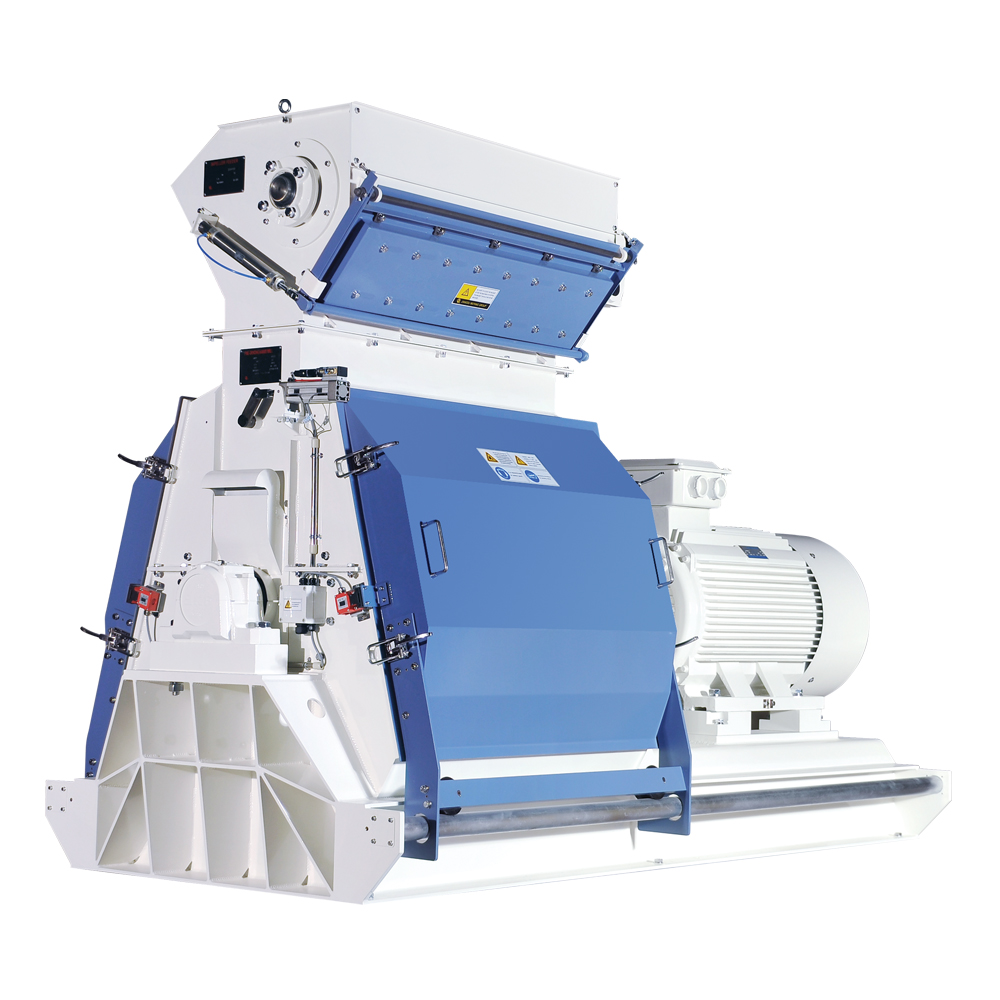Home>>News
Machineryshops.com
Muyang Grinding System
As one of the key process steps in a feed mill, grinding directly influences the production scale, power consumption, production cost and product quality of a feed mill. The power required for grinding accounts for one third or more of the total power in a feed mill.
1. Improving the digestion and utilization functions of animals by increasing the specific surface of feedstuffs
2. Improving the quality and working efficiency of the subsequent process steps such as proportioning, mixing, pelleting etc, and improve the efficiency of these steps.
Important concept --- reduced particle size (or "fineness of grind")
Reduced particle size --- The granularity of the ground particles of the ingredients of which the particle size needs to be reduced in feed processing.
Ground Particle Size
Ground particle size must adapt to the granularity requirement and the output of the entire feed manufacturing process;
Owing to the fact that there are great variations in feedstuffs and their composition, it can not be to have an "ideal" particle size to suit various animals and various ages of the animals.
The relationship between ground particle size and mixing homogeneity and flowability
The smaller the ground particle size, the poorer the stock flowability. Meanwhile, due to the increased surface area, the ground particles are apt to absorb the moisture in air, this will further reduce the flowability of stocks, bring about harms to feed manufacturing.
The relationship between ground particle size and pelleting performance
The ground particle size has very important effects on the quality of pelleted feed products. In a common conditioning and pelleting system, the effect of particle size makes up 20%; while in a strong conditioning and pelleting system, the effect of particle size accounts for 15%.
Clearance between hammer tips and screen
The distance between the hammer tips and screen when the rotor is rotating:
If the clearance is too large, material bed will increase, and the hammers can not effectively discharge the material out through the screen; if the clearance is too small, the material will pushed out of the upper edge of the sifting zone, the material can neither effectively discharged out through the screen. These two cases will all fasten the wearing of the screen and hammers, meanwhile the production efficiency will be lowered.
You could find many new types of grinding machines on our site, such as : Water-drop 968 Hammer Mill, Pioneer 668 Water-type Hammer Mill, TWLY Series Impeller Feeder, Vertical Pulverizer.
Reviews
Write a review
If you would like to write a review, please login first.










